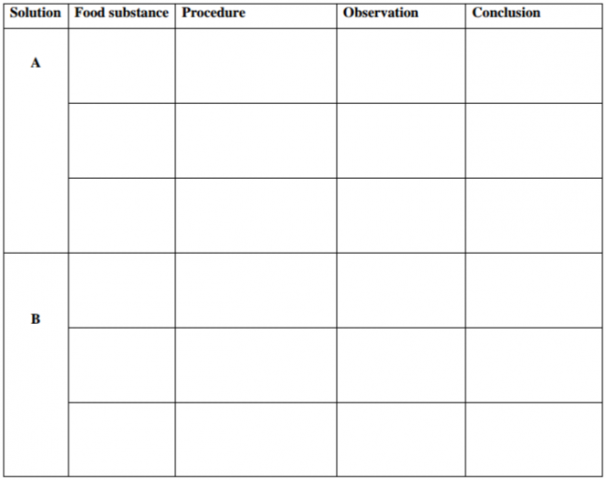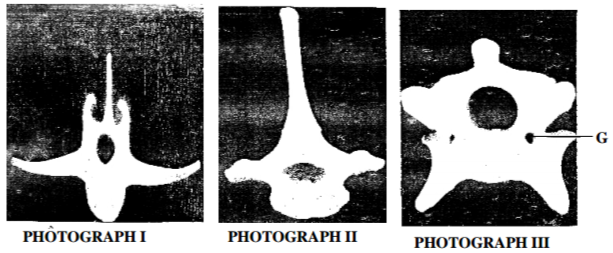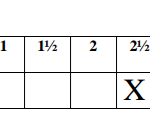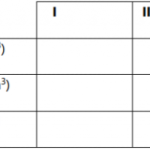KNEC KCSE Biology Paper 3 – 2014 KCSE COMA Joint Exam
2014 KCSE COMA Joint Exam
Biology Paper 3
You are provided with two solids A and B .Place all solid A into a boiling tube, and add 10ml of
distilled water. Label the resulting mixture as solution A. Divide the solution A into equal portions
in three separate test tubes all labelled A, each of which will be used for a food test in the table
below.
Place all solid B into a boiling tube, and add 10ml of distilled water. Label the resulting mixture as
solution B. Divide the solution B into equal portions in three separate test tubes all labelled B, each
of which will be used for a food test in the table below.
a) Using the reagents provided carry out food tests to determine the food substances present in
solutions A and B in each of the test tubes. In each case, record the food substance tested for, procedure followed, observation and conclusion made in the table below. (9mks)
(b) (i) Which of the two solids would be appropriate to be included in a diet of a family whose
children suffer from Kwashiorkor? (1mrk) …………………………………………………………………………………………………………
(ii) Give a reason for your answer in (b) (i) above (1mrk) …………………………………………………………………………………………………………
…………………………………………………………………………………………………………
c) (i) Name the part of the digestive system where digestion of the food substance(s) found in solid B
starts (1mrk) ……………………………..…………………………………………………….. …………………….
(ii) Name the enzyme which starts the digestion of the food substance in solid B. (1mrk) …………………………………………………………………………………………………………
d) State one way in which the food substance in solid A is important to living organisms. (1mrk) …………………………………………………………………………………………………………
…………………………………………………………………………………………………………
14 marks
You are provided with specimens labelled P, Q and R
(a) Cut specimen P transversely so as to obtain two identical halves. Draw and label the cut surface
of one half (3mrks)
b) (i) Name the type of the dehiscent fruit represented by specimen Q (1mrk) …………………………………………………………..…………………………………………….
(ii) Identify the type of placentation found in specimen Q (1mrk) ……………………………………………………………………………………………………….
(c) Describe the various features of the following parts of specimen R, other than colour and smell
(i)Corolla (3mrks)
…………………………………………………………..…………………………………………….
…………………………………………………………..…………………………………………….
…………………………………………………………..…………………………………………….
(ii)Gynoecium (3mrks)
…………………………………………………………..…………………………………………….
…………………………………………………………..…………………………………………….
…………………………………………………………..…………………………………………….
d) Name the division to which specimen R belongs (1mrk)
…………………………………………………………..…………………………………………….
…………………………………………………………..…………………………………………….
12 marks
Below are photographs I ,II and III of anterior view of three different types of vertebrae obtained
from the same mammal. Study them carefully and answer the questions that follow;
(a)Identify each of the vertebrae. Give a reason in each case.
(i) Vertebra in photograph I ………………………………………………………………….. Reason…………………………………………………………………….……………………..(1mrk)
(ii) Vertebra in photograph II ……………………………………………………………………………………… (1mrk)
Reason…………………………………………………………………………………………………………………………(1mrk)
(iii) Vertebra in photograph III…………………………………………………………………………………… Reason…………………………………………………………………………………………………………………………. (1mk)
(b) State three differences between the vertebrae in photographs I and II (3mrks) …………………………………………………………..…………………………………………….
…………………………………………………………..…………………………………………….
…………………………………………………………..…………………………………………….
…………………………………………………………..…………………………………………….
(c)Identify the part labelled G in the vertebra in photograph III (1mrk) …………………………………………………………..…………………………………………….
(d) Name the region of the body of the mammal from which the vertebra in photograph III was
obtained. (1mk) …………………………………………………………..…………………………………………….
(e) Explain how the vertebra in photograph I is normally adapted to perform its function (3mrks) …………………………………………………………..……………………………………………
…………………………………………………………..…………………………………………….
…………………………………………………………..…………………………………………….
12 marks









